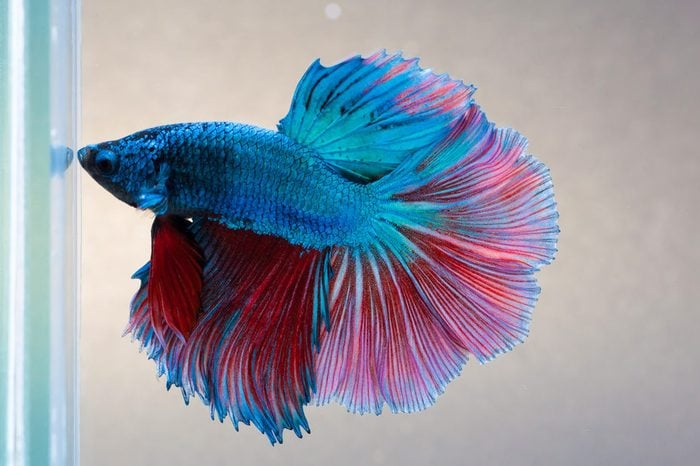
Siamese fighting fish
These gorgeous, long-tailed marine creatures have ugly personalities—which breeders have exploited in order to fight them, arena (er, fishbowl) style. Also known as bettas, according to the International Betta Congress, their bright colors are the result of breeding, too; in the wild, they’re downright dingy. You won’t want to miss these 20 stunning underwater photos.
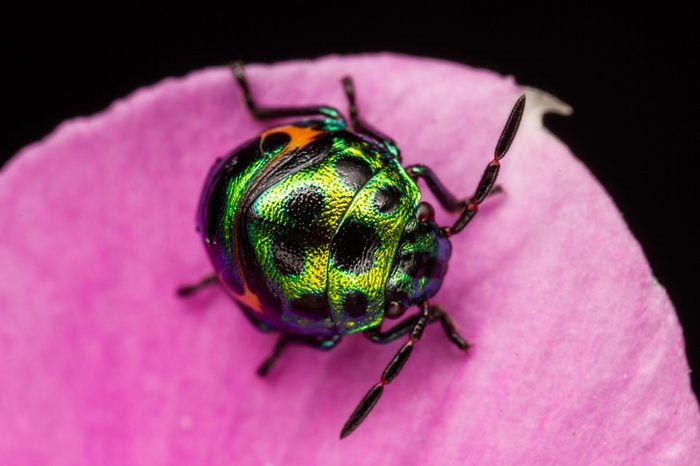
Jewel bug
A member of the family Scutelleridae, this is a true bug—that is, an insect with sucking mouthparts. This psychedelic spotted beauty sucks the life out of crops like pigeon peas in its native southeast Asia. Its iridescent coloring is the result of a swath of pigment lying beneath clear, stacked layers that reflect light.
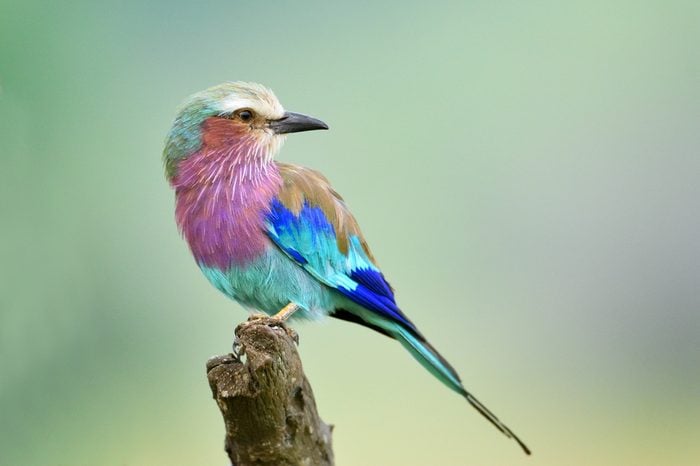
Lilac-breasted roller
The national bird of Kenya and Botswana enlivens its native grasslands with its blocks of white, blue, purple, turquoise, green, and black plumage—and, unusually, the female is just as colorful as the male. Vivid as they are, though, The Spruce reports that their eggs are just plain white. Fans of our feathered friends will get a hoot out of our favorite funny bird photos.
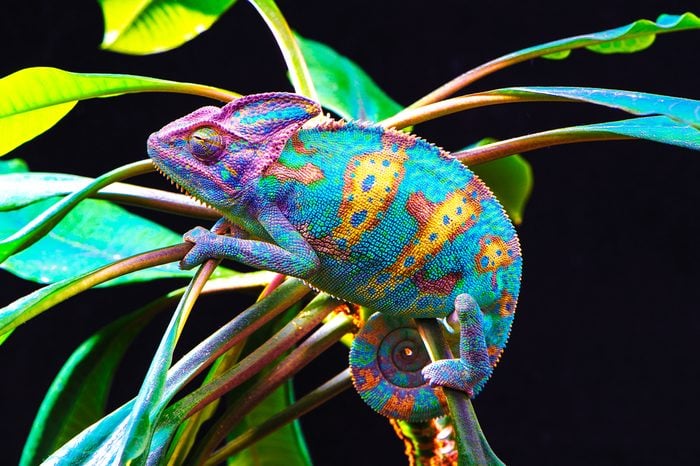
Yemen chameleon
Also known as the veiled chameleon, this 2-foot-long reptile has a base color of green, streaked with blue, brown, and yellow stripes. However, true to its chameleon nature, it can change color according to its mood. Its nervous system sends a message to the pigment-containing chromatophore cells in its skin, telling them to expand or contract; in response, they turn brown, blue, red, or yellow, according to Wired. Don’t miss these 12 amazing animals found in only one place in the world.
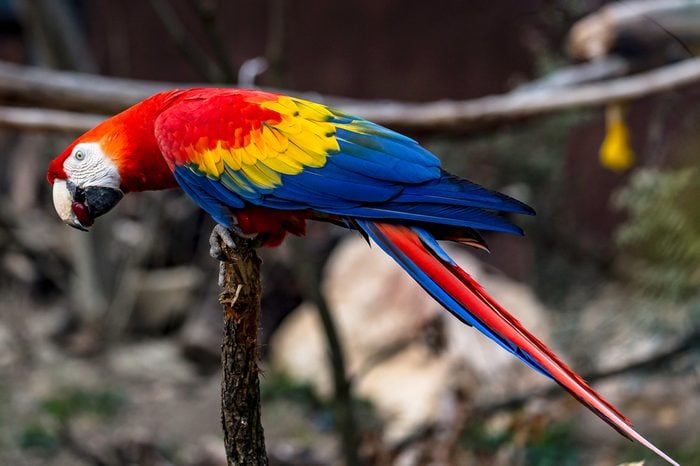
Scarlet macaw
Believe it or not, the vivid feathers on this largest parrot species actually helps it to blend in with the bright fruits and flowers of the South American rainforest in which it lives, reports National Geographic. Others in the 17 different macaw species—such as the red-fronted and great green macaws—are almost (but not quite!) as colorful as this one.
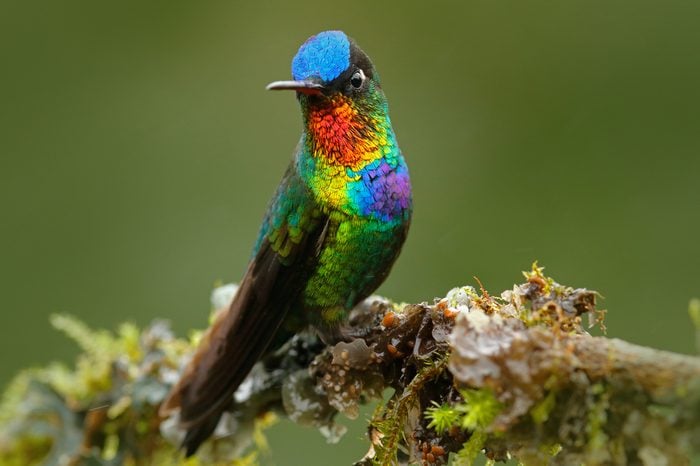
Fiery-throated hummingbird
This little neotropical avian native of Costa Rica and Panama is downright bedazzling—shimmering with what the Cornell Lab of Ornithology calls a golden-copper and blue-green sheen. Glittery as pictures make it appear, though, as one amateur photographer pointed out, its full spectrum of color is only visible from certain angles.
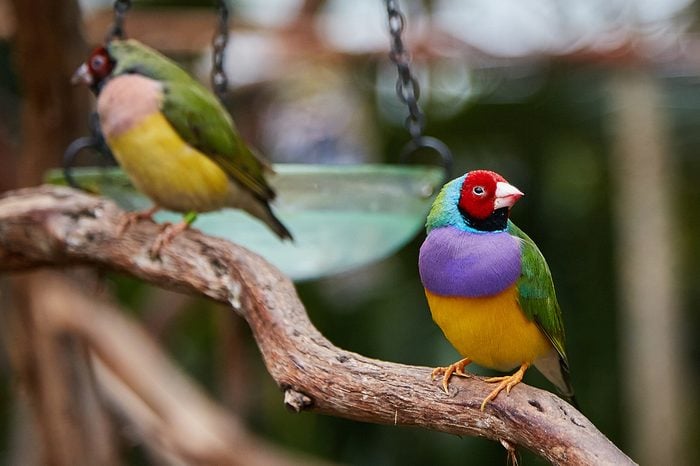
Gouldian finch
A Gouldian finch fun fact: The wee birds may have red, black, or yellow heads (in addition to their purple, green, blue, and orange body feathers). And although they are all members of the same species, they prefer to mate with other Gouldian finches that sport the same head color. According to scientists, the red-headed finches are more aggressive than the black-headed ones. Next, learn about the longest living animals in the world.
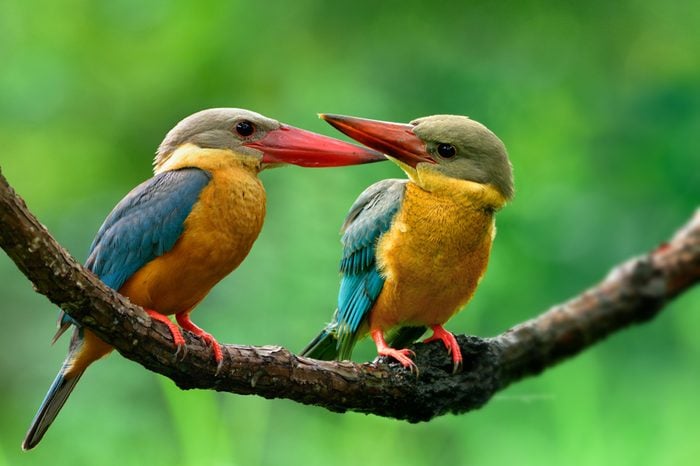
Stork-billed kingfisher
The most striking feature on this multi-colored river- and lakeside dweller of south Asia just might be its long, pointed red beak—which matches its feet. And which it uses to great effect in catching and eating its prey of fish and small mammals. It’s also fierce enough to chase off predatory birds such as eagles.
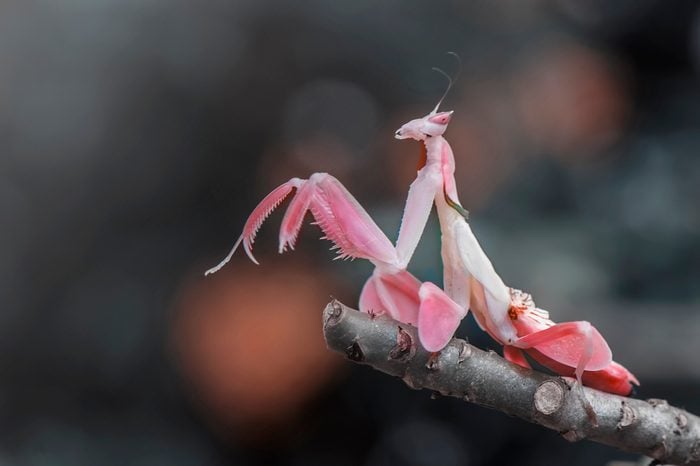
Pink orchid mantis
This praying mantis from Malaysia is usually white in color; a few in the wild, though, skew pink and purple, according to the World Association of Zoos and Aquariums. To the human eye, it so resembles the flower it mimics that an early Western traveler to Java mistook it for a carnivorous plant. However, the insects the mantis snares with its camouflage are taken in more by its color than any true resemblance to the flowers in which they forage, claims an article in The Conversation. These 13 bizarre bug facts will totally freak you out.
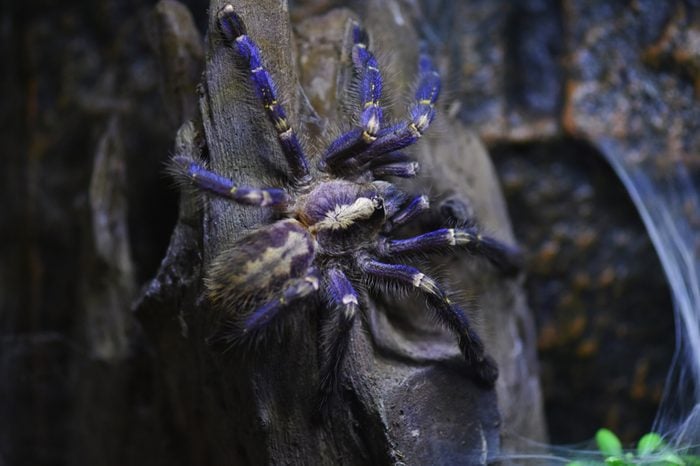
Gooty tarantula
No matter what name you use for this enormous, metallic, bright-blue tarantula from the forests of India’s Andhra Pradesh region—parachute peacock spider, Gooty sapphire ornamental tree spider, Poecilotheria metallica—you must also call it critically endangered. Although National Geographic reports that scientists suspect that its coloring has an evolutionary function, whatever that might be seems, sadly, to be failing this amazing and enormous critter now. Check out 14 of the most elaborate spider webs found in nature.
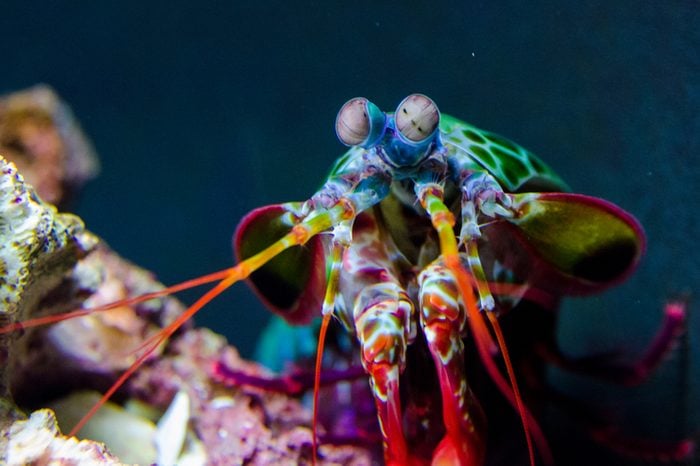
Peacock mantis shrimp
Not only is this crustacean wildly colored—with a green-red-blue-orange shell and spots dotting its front legs—but it apparently has the most powerful color-detecting eyes of any animal, according to the National Aquarium in Baltimore: “With 16 color-receptive cones (compared to humans, who have just three), the peacock mantis shrimp can detect ten times more color than a human, including ultraviolet light.”
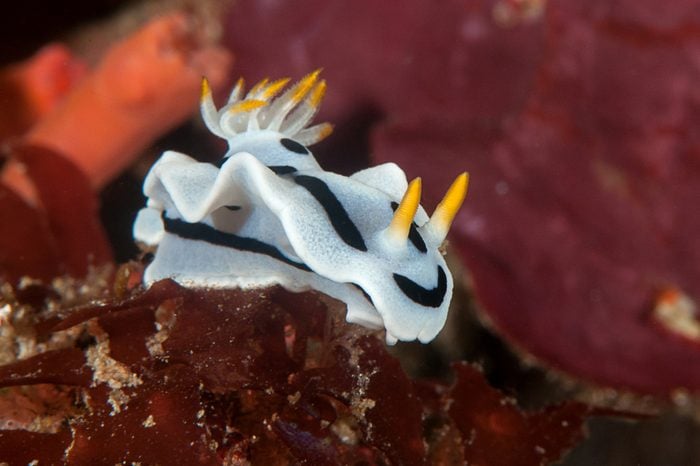
Loch’s chromodoris
This sea slug of the Indo-Pacific may look alarming with its screaming blue color and three dark stripes—but it’s only a danger to the marine sponges on which it feasts. Like other nudibranchs (basically, shell-less sea snails), which are also elaborately patterned and colored as well as hermaphroditic, this one presents a visual warning to would-be predators that it tastes terrible.
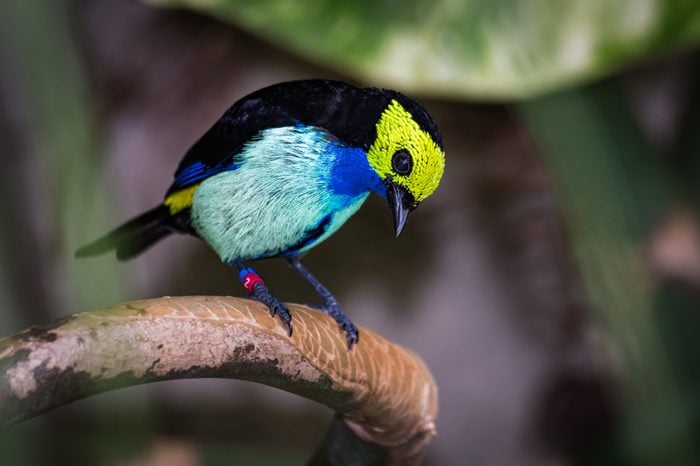
Paradise tanager
This color block bird patched with black, blue, green, and red, looks almost too perfect—and perfectly odd—to be real. Imagine coming across an entire fruit-and-insect-eating flock of them in the Amazonian forest; you might just think your eyes were playing tricks on you!
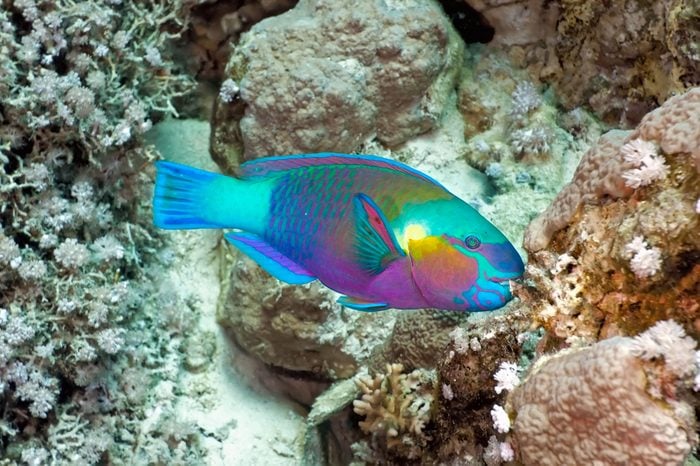
Parrotfish
National Geographic refers to the coloration of this tropical reef fish as a “classification nightmare, varying greatly, even among the males, females, and juveniles of the same species.” This isn’t the only strange thing about the species, though; it also changes its sex throughout its 7-year lifespan, lives in a sandy environment comprised mostly of its own poop, and spins itself a see-through mucous cocoon to sleep in at night.
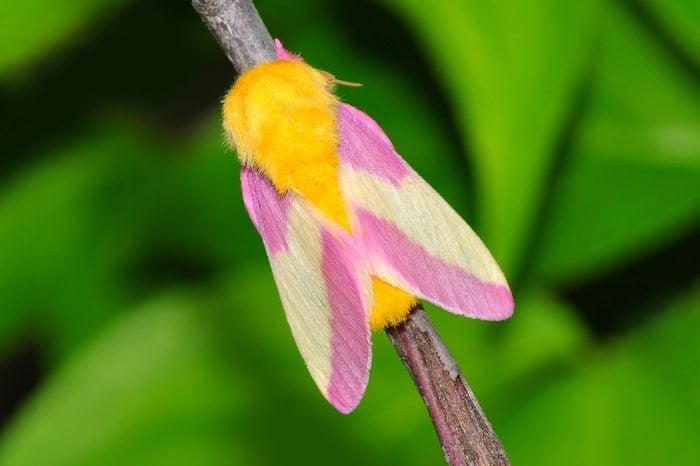
Rosy maple moth
Hailed as the most gorgeous of all moths by some insect enthusiasts, Dryocampa rubicunda looks like a tiny triangle of pink-and-yellow sherbet as it flits through forests throughout the eastern part of North American. The Butterflies and Moths of North America project explains that its pink coloring varies from insect to insect—covering the entirety of both wings in some individuals, and none in others.
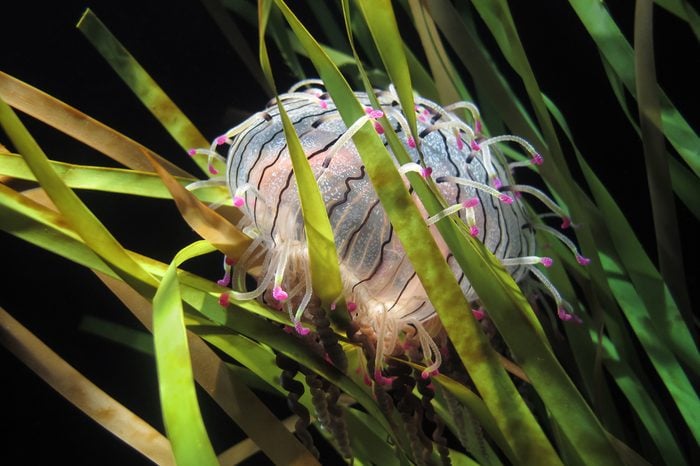
Flower hat jelly
This rare, delicate, and diaphanous marine animal sports a bell that’s pinstriped, a-dangle with tentacles that are neon green, blue, and pink and can roll and un-roll themselves. As much as it looks like a delightful (if Seussian) child’s toy, beware! It can kill and eat whole fish and has venom potent enough to leave a burn-like rash on human skin, according to Live Science.
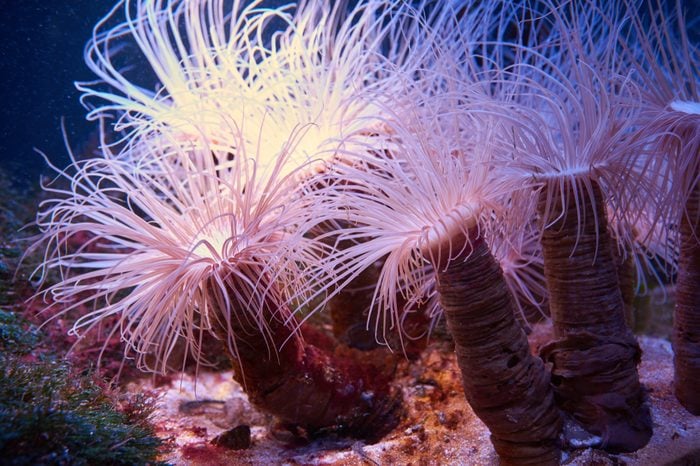
Tube anemone
With its 12-inch-long tentacles that it uses to capture prey, the exquisitely (and variously) colored tube anemone is a beast—and a beauty! Found in the shallows of coral reefs, tube anemones may resemble pale pink flowers or glowing green pompons; unfortunately, this has given them favored status among aquarists, who support an industry that removes them from their natural habitats.
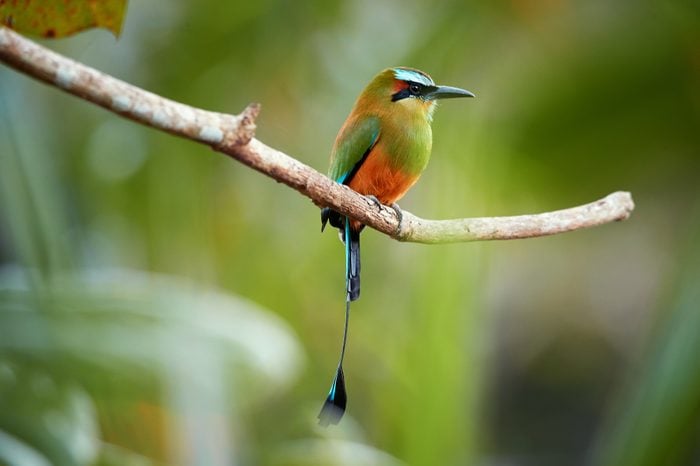
Turquoise-browed motmot
Called “flamboyantly plumaged” by the Cornell Lab of Ornithology, the turquoise-browed motmot from the Yucatán is an adorable ball of olive, orange, and turquoise feather-fluff, with an incredible, long tail that looks like an exclamation point. The longer the tail, says TravelExperta, the more successful a male bird will be in attracting a mate.
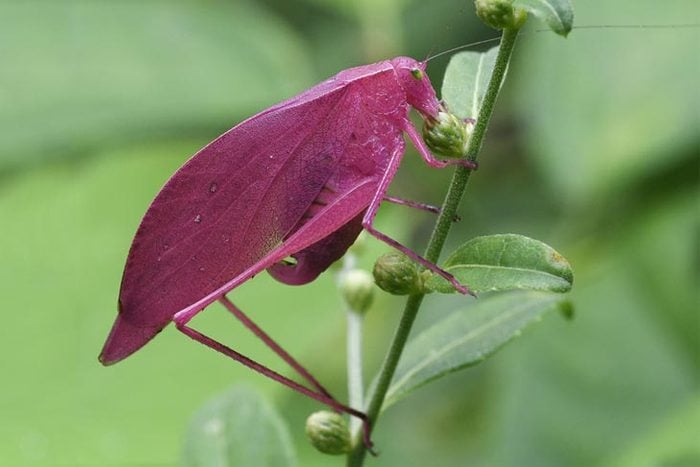
Pink katydid
Appearing as if it had been dunked in the same magenta water used to dye carnations, the unusual pink katydid is actually more closely related to a cricket than a grasshopper (although it’s sometimes referred to as a long-horned grasshopper), according to the University of North Carolina at Charlotte. Only one in 500 katydids morph pink, due to a pigmentation condition related to albinism known as erythrism, making them rare. Scientists speculate that their coloring gives them camouflage among forest flowers.
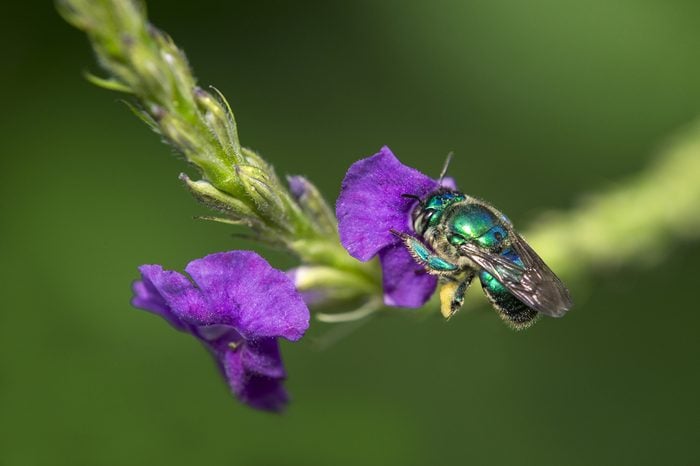
Orchid bee
The U.S. Fish and Wildlife Service calls orchid bees “living jewels.” According to its website, “Most kinds are dark green and shiny with sparse hairs, but they can be brilliant blue, purple, red, gold, brassy, or a mixture of these colors on the head, thorax, and abdomen.” Others are “densely” hairy” with yellow, orange, or green stripes on otherwise black abdomens. Native to South and Central America, they’ve lately become naturalized in parts of Florida.
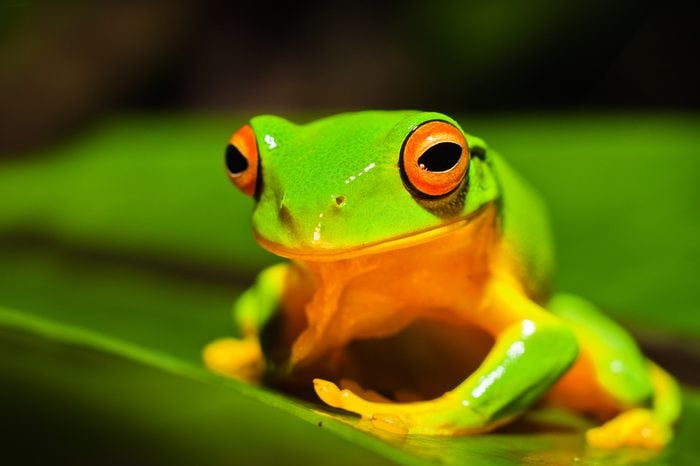
Orange-thighed tree frog
As if its eponymous orange thighs weren’t eye-popping enough, this coastal Australian amphibian also sports a lime-green body and traffic-yellow feet and belly. It breeds during the rainy season, with groups of males calling to females for 12 hours straight. Females can lay as many as 1,600 eggs at a time in shallow pond waters, according to ThalaBeach.com.
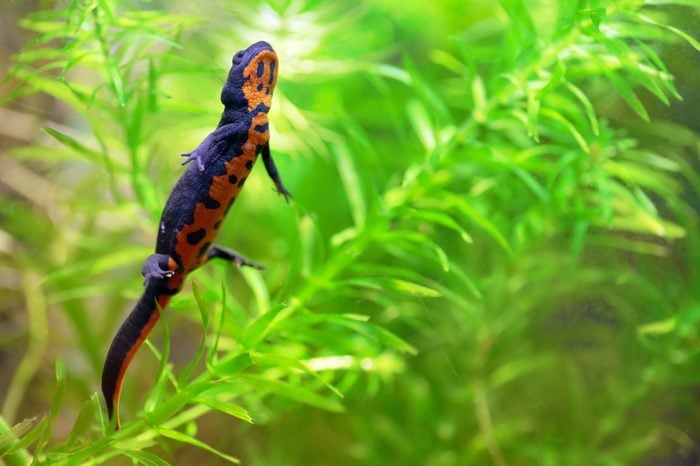
Fire-bellied newt
This semi-aquatic amphibian may look unremarkable enough at first glance from above. But flip it over and its neutral black or brownish color gives way to a spectacularly speckled red belly. Although native to China and Japan, two species can now be found in the wild Florida and Massachusetts, as a result of the pet trade—although fortunately, the U.S. Geological Survey has found no evidence that they’re interfering with local species. Find out which animals have become extinct in the past 100 years.
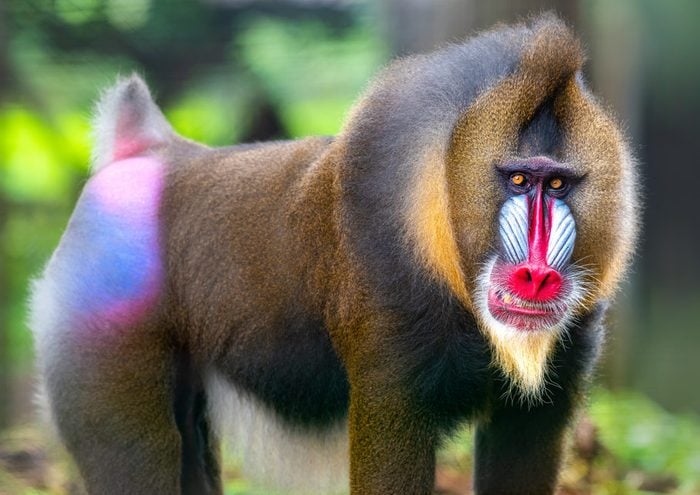
Mandrill
Boldly colored mammals are hard to come by, which makes this shy, largest-of-all monkeys a very rare creature indeed—all the rarer now, as it’s threatened due to hunting and habitat loss across equatorial Africa. Its blue-and-red face and powder-puff rump actually becomes even more brightly hued when the animal is excited, according to National Geographic. Read on for the strangest animal found in every U.S. state.
